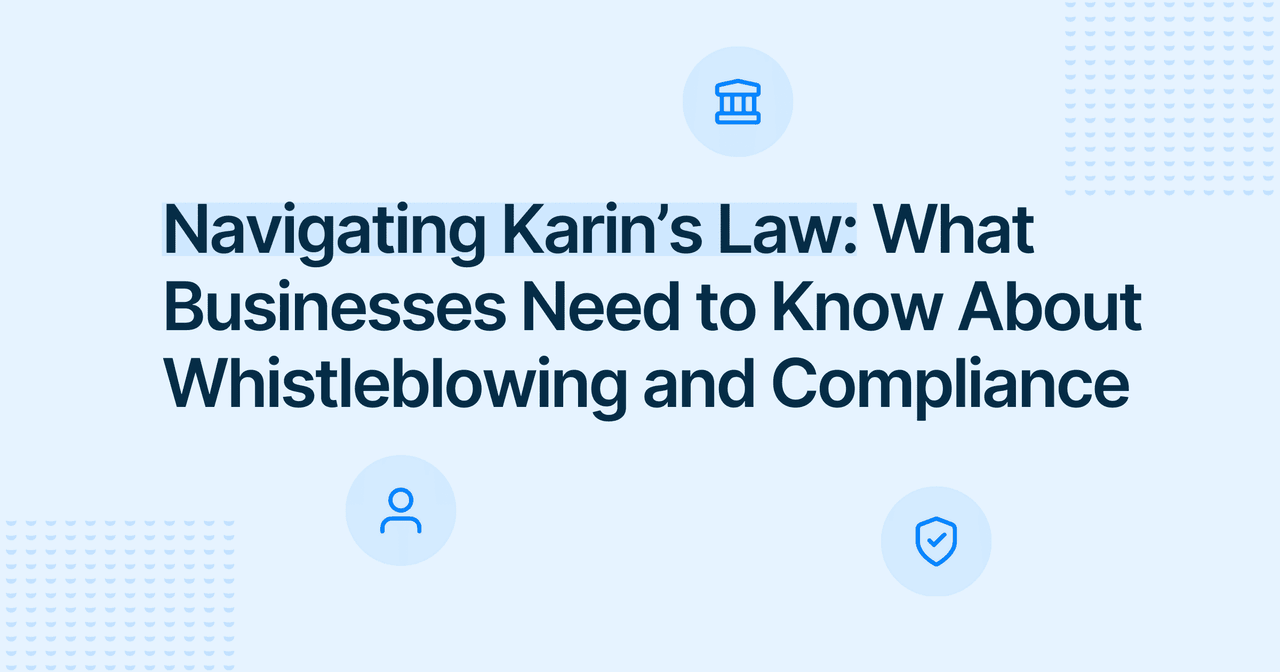Building discipline seems so simple. Reward good behavior and punish the bad. But the moment you find yourself in a situation where you have to do either, you see it’s not so simple at all. Organizations far too often forget the first, and struggle to do the second well.
How do you write up an employee? When is it the correct disciplinary action to take? And how do you even do it while staying objective and motivating them to do better? All that, and more, is what we’ll be looking to answer in this article. So, keep reading to find out!
What Is a Write-Up?
A write-up is a formal written record of an employee’s breach of an organization’s internal terms of conduct. It’s typically issued by the employee’s direct manager following several verbal warnings, if they fail to improve or avoid the undesirable behavior altogether.
Write-ups serve two distinct purposes:
- Improving Performance: Besides details regarding the misconduct, write-ups should include a comprehensive performance improvement plan (PIP) to explain what the employee needs to do to avoid further corrective/disciplinary actions.
- Protecting the Employer: Write-ups also serve as a paper trail that helps management effectively evaluate employees under consideration for raises and promotions, as well as providing paper trail evidence in the event of wrongful termination lawsuits.
Are Write-Ups Subject to Any Laws?
Yes, although disciplinary actions are mostly left up to the individual organizations, there are employee write-up laws that regulate when, how, and to whom they can be issued to be considered legally sound. And suffice it to say, it’s a good idea for you to know about them.
Laws that deal with employee write-ups include:
- Employment Contracts: In many countries, employment contracts outline disciplinary procedures, including how write-ups and other actions should be handled. Employers must adhere to the terms of the contract.
- Labor Laws: Dictate how disciplinary actions, including write-ups, must be carried out to be done fairly and without discrimination. In some jurisdictions, employees may be entitled to a formal process before being suspended or terminated.
- Anti-Discrimination Laws: Demand that disciplinary actions must not be based on employees’ personal attributes (race, gender, religion, etc.) and apply to everyone equally. The US Civil Rights Act of 1964 and the UK Equality Act of 2010 belong here.
- US National Labor Relations Act (NLRA): In the US, this act protects employees' rights to engage in concerted activities, like discussing working conditions or forming unions. Punishing an employee for these actions can result in a lawsuit.
- Family & Medical Leave Act: Laws such as the US Family and Medical Leave Act (FMLA) protect employees from disciplinary action for taking leave for medical reasons or to care for a family member. Otherwise, they may face legal claims.
- Fair Work & Employment Standards: In countries like Australia, Fair Work laws govern how employers must treat employees in disciplinary matters, including the requirement for providing warnings before certain actions, such as dismissal.
- Occupational Safety & Health Act (OSHA): Employers are prohibited from disciplining or firing employees who report health and safety violations. Employees have protection when speaking up about unsafe work environments under laws like OSHA.
- Data Privacy Laws: If write-ups include any type of personal data, companies must comply with local data privacy regulations, like the European GDPR, or the US CCPA, to ensure employees’ information is handled responsibly and confidentially.
- Unfair Dismissal Laws: These prevent employers from disciplining or firing employees for engaging in legally protected activities, such as whistleblowing or filing complaints about workplace harassment or discrimination.
- Retaliation Protections: In many jurisdictions, unfair dismissal laws require employers to provide due documentation and evidence to show that if an employee was given a write-up that could result in termination, they were given notice and a chance to improve.
What Does a Write-Up Mean for an Employee?
In terms of disciplinary actions, write-ups are moderately severe. So, what they mean for an employee entirely depends on the nature of their misconduct, the number of write-ups they’ve already received, and the company’s policies/practices.
If it’s your first (ever or just in this company), it’s essentially just a warning, telling you that you’ve messed up and should’ve paid better attention to what your manager’s been telling you. You can appeal it in a discussion if you feel it’s unjust, or accept it and keep moving forward.
It may place you under increased scrutiny for a few months and delay your raise or promotion, but that’s about as serious as it will get. However, if you’ve received several write-ups in quick succession, the consequences can include unpaid time off or even termination.

What Are the Reasons to Write Up an Employee?
There are numerous reasons to issue a written warning, but that doesn’t mean that it’s the best choice for every situation. You don’t want to make a mountain out of a molehill, but neither should you be too lenient with serious offenders.
Here’s when you might want to write up an employee:
- Consistent Violations of Company Policies: If an employee continually breaks your organization’s rules, despite being warned several times that it won’t be tolerated.
- Poor Performance: Whenever an employee consistently underperforms in their responsibilities, whether in terms of quality or volume, without sound reasoning.
- Insubordination: If an employee consistently refuses to follow direct instructions or is disrespectful towards supervisors or colleagues, disrupting standard daily operations.
- Attendance Issues: Regular tardiness or unexcused absences, especially if other measures have not been effective in improving the employee’s behavior.
- Ethical Violations of Workplace Conduct: Any behavior that undermines workplace values, like dishonesty, harassment, or inappropriate behavior.
Bad Employee Write-Up Reasons & Alternative Disciplinary Actions
As we mentioned, not all instances of employee misconduct necessitate an immediate written warning. Similarly, in certain situations, a simple write-up is not enough. Below, we’ll outline other disciplinary actions along with examples of behavior that may require them.
Here are some punishments you may choose instead of issuing a write-up:
- Verbal Warning: An informal conversation to address minor issues without a permanent record. Often used for occasional tardiness, small missed deadlines, etc.
- Coaching / Mentoring: Professional guidance to improve an employee’s skills or behavior. Best used for difficulties prioritizing work, communication issues, etc.
- Performance Improvement Plan (PIP): A formal, structured plan containing goals and timelines. Often used for repeatedly missing KPIs, ongoing quality issues, etc.
- Paid / Unpaid Suspension: Temporary removal from work, often during ongoing investigations. Best used for harassment, theft, safety violations, etc.
- Demotion / Role Change: Moving an employee into a position of lower responsibility. Often used for poor performance/leadership, repeated client complaints, etc.
- Employee Assistance Programs (EAP): Professional support for personal or work-related issues. Best used for burnout, interpersonal conflicts, etc.
- Termination: Scheduled or immediate end of the employee’s contract. Often used for repeated serious offenses, sexual harassment, gross negligence, theft, etc.
How to Properly Write a Write-Up for an Employee
Now that you know what a write-up is and when the right (and wrong) times to use it are, it’s high time you learn how to do it right. Below, we’ll discuss the specific steps you’ll want to take to prepare the document, as well as how to present it so it fulfills its purpose.
Here’s how to formally write up an employee:
- Collect All Relevant Information: Before you begin, ensure you have all the necessary details ready, including the names and roles of the employees involved, the date(s) of the incident(s), and witness testimonies, to create a comprehensive picture.
- Review Past Interventions: If the employee was involved in any issues previously, even if they were minor, you should consider them relevant to the review, as they can tip you off to additional disciplinary actions or requisites for the employee’s PIP.
- Choose the Right Tone: Remember that although the write-up is corrective feedback, it isn’t a personal attack. You must be strategic and objective in your approach to communicate that this is an intervention, but also an opportunity to improve.
- Prepare a Performance Improvement Plan: Taking into account everything you know, you should have a good understanding of what needs to change for the employee to avoid termination. Lay out the necessary steps clearly with specific goals and timelines.
- Format & Fill In the Write-Up: Based on an in-house or online template, segment the document into succinct yet cohesive sections that include all necessary information to streamline communication between you, the employee, and leadership.
- Review & Retain: Once you’re done, make sure to carefully go over the write-up one (or several) more time(s) to ensure you’ve not made a mistake, or left out anything important. Afterwards, make a copy for yourself and HR before presenting.
How to Present a Write-Up to an Employee
Great work! Assuming you’ve done your due diligence and took care in crafting the write-up, you’re halfway done. However, so far, we’ve neglected to mention one thing – how to give a write-up to an employee. This is an equally important step, and so without further ado…
Here’s how to do an employee write-up presentation:
- Plan the Time & Setting: Set yourself up for success by choosing a quiet space (like your office) where you can talk uninterrupted without worrying about being overheard. Ideally, during a slow time of the day and the week, to prevent unnecessary stress.
- Prepare Emotionally & Mentally: As the bearer of bad news, you must anticipate an adverse reaction. Perhaps the employee will get defensive, or even angry and combative. You must remain calm and composed at all times to communicate effectively.
- Start the Meeting Off Positive: The first few moments will set the tone of your entire interaction, so it’s best to start off by reassuring the employee that you’re there to help them thrive in the company, and you fully intend to support them on their journey.
- Present the Write-Up Objectively: Afterwards, explain the reason for your meeting and present the employee with a copy of their write-up. Emphatically stress the impact you believe their behavior has had on the team/company and give specific examples.
- Allow the Employee to Respond: Give the employee the space to react, listen actively, and walk them through the write-up step-by-step, clarifying and answering any questions they may have along the way to make sure they understand the situation.
- Focus on the Future: Introduce the PIP and dive into the measurable outcomes and timelines you’d like to see. At this point, it’s a good idea to offer support again, either in the form of mentorship or additional resources to help them succeed.
- Be Clear About the Consequences: Without being dramatic, reinforce the fact that there will have to be additional corrective actions if they fail to change their behavior or fulfill their PIP obligations. Still, you should end on a hopeful note.
- End the Meeting Professionally: After all has been said, summarize the conversation, their next steps, and the fact that you’re there to help them turn the situation around. Set a time for their next follow-up sometime during their review period to discuss progress.
- Document the Conversation: Once the meeting is done, take the time to write a short report, including everything that was discussed. You can have the employee sign it to show acknowledgment, or simply CC them in the follow-up email to HR/leadership.

Employee Write-Up Example
Employee Name: John Doe
Position: Customer Support Representative
Department: Customer Service
Date of Write-Up: September 15, 2025
Incident Description
On September 10, 2025, John was observed consistently arriving late for his scheduled shift without prior notification. He was scheduled to begin work at 9:00 AM, but arrived at 9:25 AM without notifying the team or the supervisor about his delay. This is the third occurrence of tardiness within the past two weeks.
John’s behavior has led to a delay in the response times for customer inquiries, which impacts the team's overall productivity and customer satisfaction. The impact of these delays includes longer wait times for customers, which has led to increased customer complaints in the system.
Policy Violated
John’s actions violate the following company policies:
- Punctuality Policy: Employees are expected to arrive at their scheduled start time and notify their supervisor in advance if they are unable to meet that time.
- Team Collaboration Policy: Employees must contribute to the team's ability to meet customer expectations, including timely responses to customer inquiries.
Past Interventions
On August 25, 2025, John received a verbal warning regarding his tardiness and was reminded of the company’s expectations around punctuality. A follow-up discussion was held on September 2, 2025, in which John acknowledged the issue, but no improvement was made. This is the third occurrence in a short span, demonstrating a pattern of tardiness.
Expected Improvement
- Punctuality: John is expected to arrive at work by 9:00 AM for all shifts unless prior arrangements are made.
- Communication: John must notify his supervisor if he is running late, no less than 30 minutes before his shift begins.
- Customer Response Times: John must ensure that his customer response times meet the team’s standards for handling inquiries within 24 hours.
Performance Improvement Plan (PIP) Timeline
- Immediate Action: John must immediately improve his punctuality starting September 16, 2025.
- Follow-Up Meeting: A follow-up meeting is scheduled for October 1, 2025, to review John’s progress, focusing on punctuality and customer service delivery.
Final Review: If no improvement is noted by October 15, 2025, further disciplinary actions, including suspension or potential termination, will be considered.
Consequences for Non-Improvement
Failure to improve performance as outlined in this write-up could lead to further disciplinary action, including unpaid suspension or termination, depending on the severity and recurrence of the behavior.
Support Offered
- Mentorship: John will be paired with a senior team member for the next two weeks to ensure he receives additional guidance on time management and customer service expectations.
- Training: John is offered access to the company’s time management and customer service training resources to help him improve his performance.
Conclusion: Employee Write-Ups as Preventive Mechanisms
Phew. By now, you can see that writing and presenting employees with write-ups is hard and often unpleasant work. However, make no mistake, they’re also vital tools for identifying and preventing issues that may be lurking beneath the surface of your outwardly happy company.
As such, you should investigate all reported misconduct seriously and utilize all available corrective measures to maintain productivity and professionalism across teams. Unfortunately, that’s easier said than done, when often, you’re not even aware of all that is wrong.
And that’s where FaceUp can help. Our platform was designed with whistleblowing in mind, allowing staff to report harassment, disclose conflicts, and share ideas all in one centralized whistleblowing system. So, why not make your and their lives easier at the same time?
















